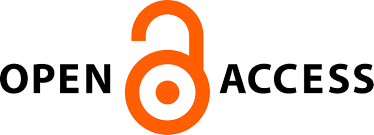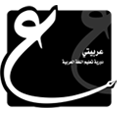Micro and Meso Discourse Analysis on Arabic Vocabulary Videos Based TikTok from Fairclough's Perspective
Keywords:
Micro and Meso Discourse, Fairclough Theory, Arabic Learning Videos, TikTokAbstract
The trend of utilizing technology in education enhances the achievement of learning objectives. TikTok's presence fosters innovation in Arabic language learning. This study employs Norman Fairclough's theory, analyzing microstructural (vocabulary, sentences, lexical meaning) and mesostructural (discourse production and consumption) discourse. The goal is to critically analyze Arabic language learning videos on TikTok. This qualitative research uses TikTok videos and netizen comments. Data collection methods included observation, basic tapping techniques, and advanced SLC with note-taking. Validity techniques were consistent observation and time extension. Instruments included the researcher, data cards, and recapitulation sheets. The study analyzed 20 video samples with 752 words and 128 sentences. Vocabulary analysis found 2 collocation groups and 10 set groups. Sentence classification based on communication context identified 15 interrogative, 45 declarative, 6 exclamatory, and 20 imperative sentences. Sentence structure classification found 5 argumentative, 1 exposition, 1 descriptive, and no narrative texts. Lexical analysis identified 150 nouns, 23 adjectives, and 46 verbs. Content production varied by account type. Text consumption analysis revealed diverse comment models: interest, criticism, suggestions, and interactions between netizens and content creators. Continuously creating engaging Arabic learning content on TikTok can boost public interest and dispel the stigma that Arabic is difficult.
References
Afriyanto, N., Rosyid, M. F., & Safii, R. (2023). Text Understanding Strategies Through Qiraah Wa Tarjamah Arabic Learning at MAN 1 Brebes.
Alim, M. Z. (2021). Manfaat Media Audio-Visual dalam Pembelajaran Bahasa Arab.
Arikunto, S. (2010). Prosedur Penelitian Suatu Pendekatan Praktik. Penerbit Rineka Cipta.
Bouvier, G., & Machin, D. (2020). Critical discourse analysis and the challenges and opportunities of social media. Critical Discourse Studies and/in Communication, 39-53.
Chng, H. H. (1996). Critical discourse analysis: The critical study of language - : Norman Fairclough, London: Longman, 1995. £12.99. Journal of Pragmatics, 26(5), 707–710. http://dx.doi.org/10.1016/j.cirp.2016.06.001%0Ahttp://dx.doi.org/10.1016/j.powtec.2016.12.055%0Ahttps://doi.org/10.1016/j.ijfatigue.2019.02.006%0Ahttps://doi.org/10.1016/j.matlet.2019.04.024%0Ahttps://doi.org/10.1016/j.matlet.2019.127252%0Ahttp://dx.doi.o
Dewanta, A. A. N. B. J. (2020). Pemanfaatan Aplikasi Tik Tok Sebagai Media Pembelajaran Bahasa Indonesia. Jurnal Pendidikan Dan Pembelajaran Bahasa Indonesia, 8(2), 95–102.
Dogouru, M. (2022). ANALISIS KOLOKASI DAN SET DALAM KUMPULAN PUISI “PERIHAL GENDIS” KARYA SAPARDI DJOKO DAMONO. 2.
Dwijayani, N. M. (2019). Development of circle learning media to improve student learning outcomes. Journal of Physics: Conference Series, 1321(2). https://doi.org/10.1088/1742-6596/1321/2/022099
Fauzan, U. (2013). Analisis Wacana Kritis Model Fairclough. Pendidik, 5(2), 14–27.
Hidalgo Tenorio, E. (2011). Critical discourse analysis, an overview. NJES Nordic Journal of English Studies, 10(1), 183–210. https://doi.org/10.35360/njes.247
Hosen, M., Ogbeibu, S., Giridharan, B., Cham, T. H., Lim, W. M., & Paul, J. (2021). Individual motivation and social media influence on student knowledge sharing and learning performance: Evidence from an emerging economy. Computers and Education, 172(June 2020), 104262. https://doi.org/10.1016/j.compedu.2021.104262
Ihsan, I. (2023). The challenges of elementary education in society 5.0 era. ,. International Journal of Social Learning (IJSL), 3(3), 341-360.
Jacobs, K. (2021). Discourse analysis. In Methods in urban analysis. Springer Singapore.
Kasin, B. A. W. (2016). Perancangan Media Pembelajaran Seni Budaya Aspek Teater Materi Teknik Dasar Peran Menggunakan Aplikasi Tik Tok di Sekolah Menengah Pertama Negeri 3 Tanasitolo Kabupaten Wajo Sulawesi Selatan. 2, 1–12.
Kotler, P., Kartajaya, H., & Setiawan, I. (2021). Marketing 5.0: Technology for humanity. John Wiley & Sons.
Mahmuda, S. (2018). MEDIA PEMBELAJARAN BAHASA ARAB. An-Nabighoh, 20(01).
Mahmudi, M. (2016). Penerapan Teori Behavioristik Dalam Pembelajaran Bahasa Arab (Kajian Terhadap Pemikiran Bf . Skinner). Prosiding Konferensi Nasional Bahasa Arab II, 02(01), 429–435.
Masitoh. (2020). Pendekatan dalam Analisis Wacana Kritis. Jurnal Elsa, Volume 18, (1).
Moleong, L. J. (1989). Metodologi Penelitian Kualitatif. PT Remaja Rosdakarya
Prawoto, E. C. (2022). Fairclough’s Critical Discourse Analysis on News Texts on" Merdeka Belajar Kampus Merdeka (MBKM)" in Kompas. com. Bahasa: Jurnal Keilmuan Pendidikan Bahasa Dan Sastra Indonesia, 4(2), 60-71.
Puji Lestari, S., Wulaningsih, I., & Fitriyah, L. (2018). Studi Fenomenologi Perilaku Homoseksual Di Kota Semarang. Jurnal Smart Keperawatan, 5(2), 50. https://doi.org/10.34310/jskp.v5i2.213
Serrano Guerrero, B. (n.d.). THE UsE OF SOCIAL MEDIA AND LEARNING PLATFORMS IN THE TEACHING OF ENGLISH.
Suriansyah, A. (2015). PENGEMBANGAN PEMBELAJARAN BERBASIS TIK (PROSES DAN PERMASALAHANNYA). 10.
Yulianti, E. (2023). Implementation of Behavioristic Learning Theory in Language Learning. International Journal of Education, Information Technology, and Others, 6(2), 383-390.
Zubaidi, A., Shodiq, M. J., Indonesia, U. I., Islam, U., Sunan, N., & Yogyakarta, K. (2021). 341-1053-1-PB.pdf. 6
Downloads
Published
Issue
Section
License
Copyright (c) 2024 Winda Nur Lathifah, Singgih Kuswardono, Khaldi Hicham (Author)

This work is licensed under a Creative Commons Attribution-NonCommercial-ShareAlike 4.0 International License.







